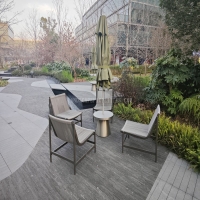Welcome to the website for landscape facilities products and knowledge.
How does fabric’s light reflectivity impact surrounding plant photosynthesis?
The interaction between fabric’s light reflectivity and plant photosynthesis is a critical yet often overlooked factor in horticulture and agricultural design. Reflective fabrics, commonly used in greenhouses or shade cloths, can significantly alter the light environment for plants by redirecting or diffusing sunlight.
When light strikes a reflective fabric, its surface properties determine how much light is absorbed, transmitted, or reflected. High-reflectivity fabrics scatter more light evenly across plant canopies, reducing shadows and ensuring lower leaves receive adequate light for photosynthesis. This diffusion mimics natural light conditions, potentially enhancing photosynthetic efficiency. Conversely, low-reflectivity materials may create uneven light distribution, leading to photoinhibition in overexposed areas or light starvation in shaded regions.
Studies suggest that optimizing fabric reflectivity can improve crop yields by up to 15%, particularly in dense planting systems. For instance, white or metallic reflective fabrics are favored in vineyards to boost grape quality by increasing light penetration. However, excessive reflectivity might raise leaf temperatures or cause photodamage, requiring careful material selection.
Innovations in horticultural textiles now integrate wavelength-specific reflectivity, targeting red and blue light spectra most crucial for photosynthesis. By tailoring fabric properties to plant needs, growers can harness light reflectivity as a tool for precision agriculture, balancing energy efficiency and biological productivity.
Related search:

Recommendation
Metal structure rattan chair without armrests for single person, with woven seat and backrest.